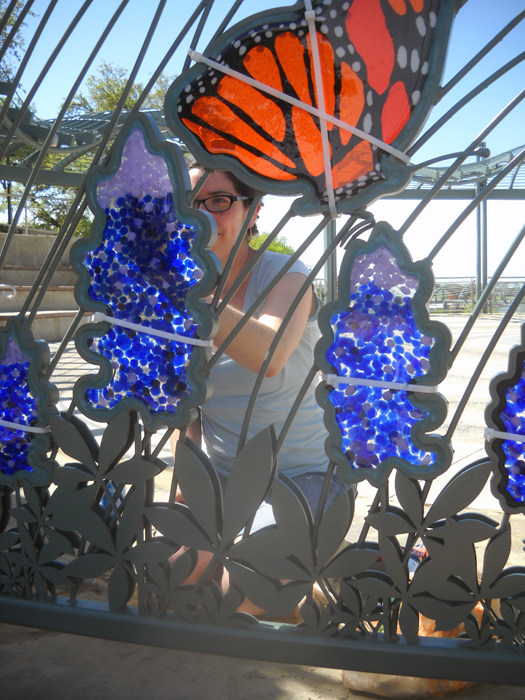
|
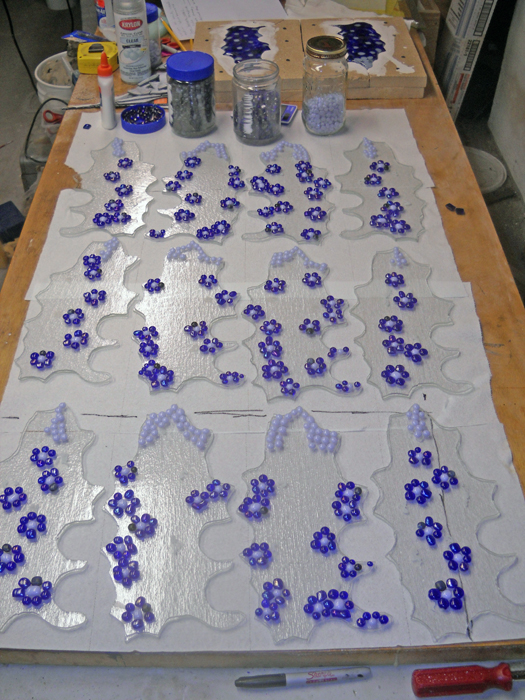
|
Glass inserts were Bluebonnet flowers and Monarch
butterflies. We used Bullseye glass to make them. Here my daughter,
Susannah, works on installing a
Bluebonnet.
|
Each insert was approximately 1" thick, composed
of 8 to 10 layers plus some color elements., For the
Bluebonnets, generally two layers were fused with beads on
top as color elements in the first stage of the process.
Then four of these were
assembled in a mold and fused to make the insert.
For beads, we used two colors of blue, and one neodymium glass that varied in color
from light blue to white to light pink depending on
lighting.
|
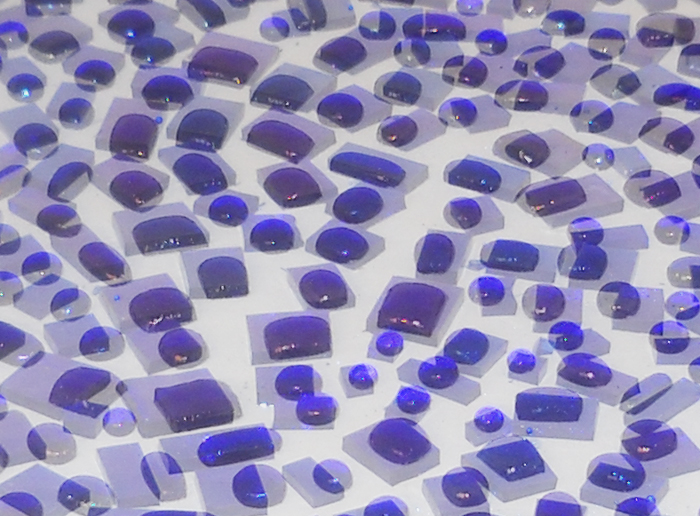
|
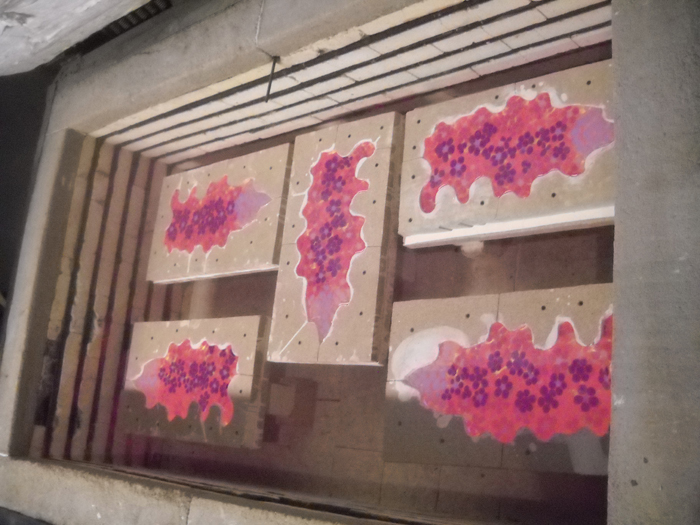
|
Thousands of beads were needed for the
Bluebonnets. They were cut as small squares or
rectangles. Then , in the kiln, as they melted,
surface tension caused them to "ball up" into beads. The image
above is an overlay to show the "ghost" of the original
cut shape together with the bead that it made.
|
The bulk of the fusing was done with kiln space rented from
Wheaton Arts in Millville, NJ. This images shows
five Bluebonnets cooking. These molds for the second
fuse were constructed of Bullseye vermiculite board and
held together with stainless steel screws. We had
good success with
this board for molds, and also for light duty kiln
shelves. Although pre-firing the board in a kiln
with top heating elements causes it to warp, we had no
problems doing the same in these large kilns with side elements. We experienced no
warping or breakage. The kilns also worked very well
for the glass.
|
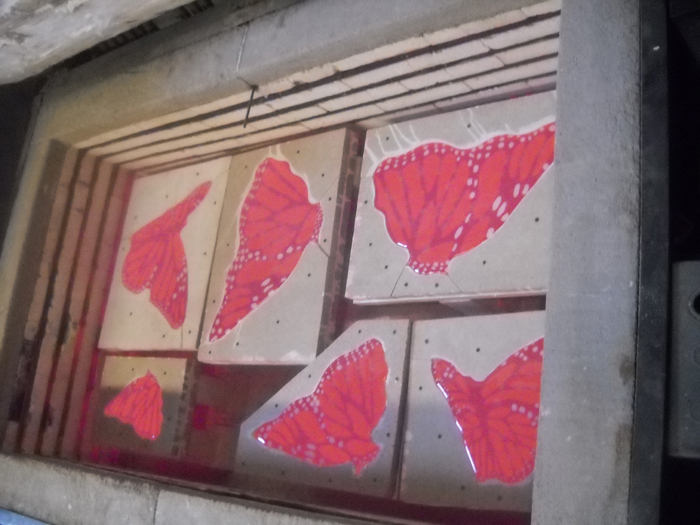
|
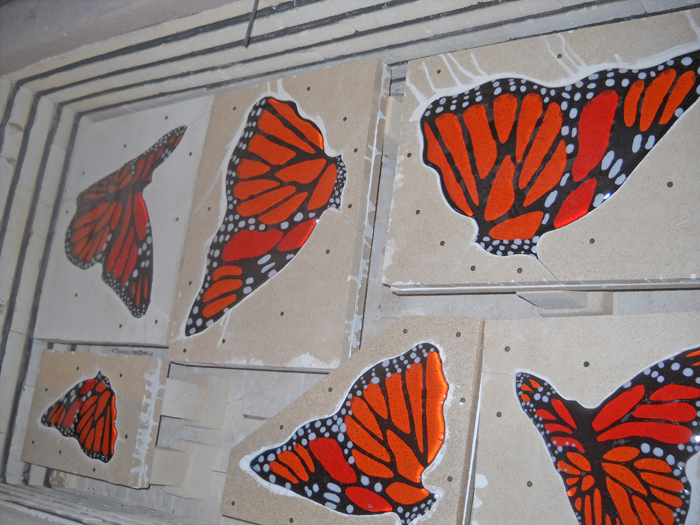
|
This shows six Monarchs
cooking in their final fuse.
|
And this shows them after they have cooled.
|
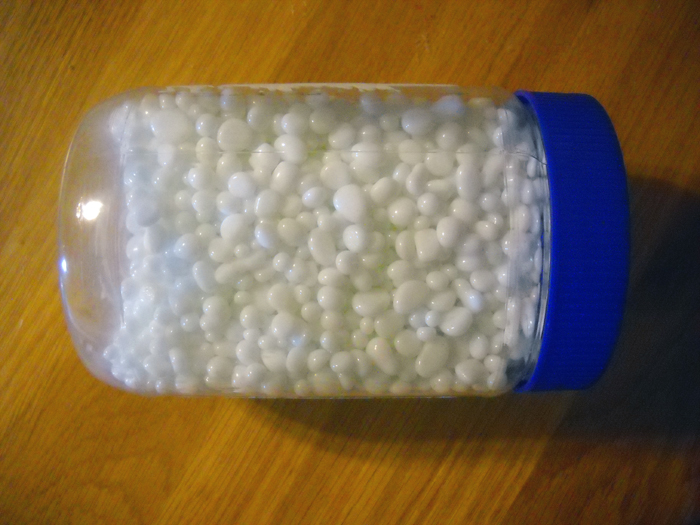
|
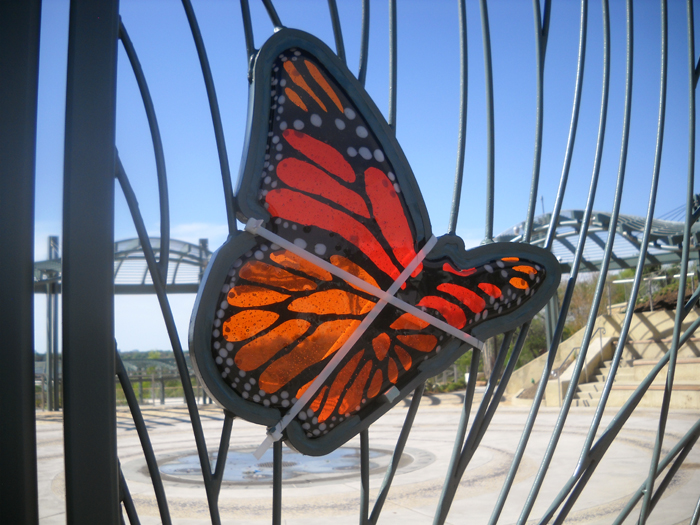
|
Monarchs required a variety of mostly smaller
white beads for some of their spots. Because these
were smaller than we wanted to cut, we made them by
quenching glass, which caused it to "crackle" in a network
of small cracks. Applying a hammer to this crackled
glass produced a frit that was in the right size range to
make the beads. We heated the glass to 900 F for 25
minutes, and quenched it in a bucket of cold water.
This is a potentially hazardous process, so we dressed in
full leathers, and used a face shield and safety glasses.
|
One side of each piece had a "matte" finish
because it was the bottom side in the kiln. These
sides were ground and polished at Glassworks Unlimited in
Greenville, Texas. We used CRL backer rod, Dow 1200
OS primer, and Dow 795 silicone to mount the
inserts. We used big cable ties to hold them in
place while the silicone set.
|
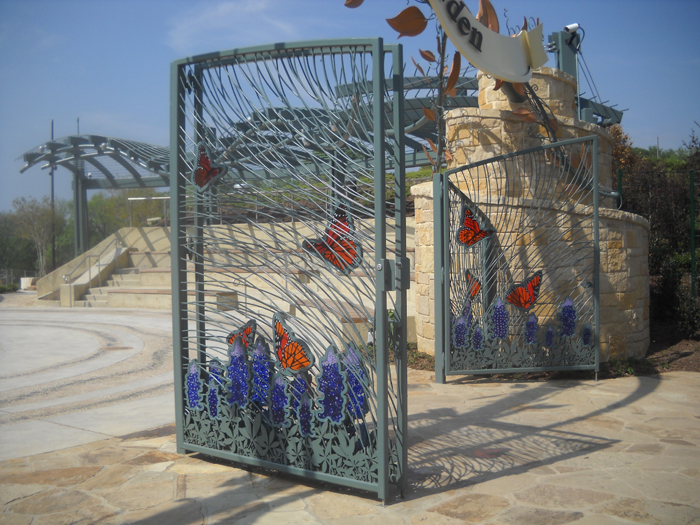
|
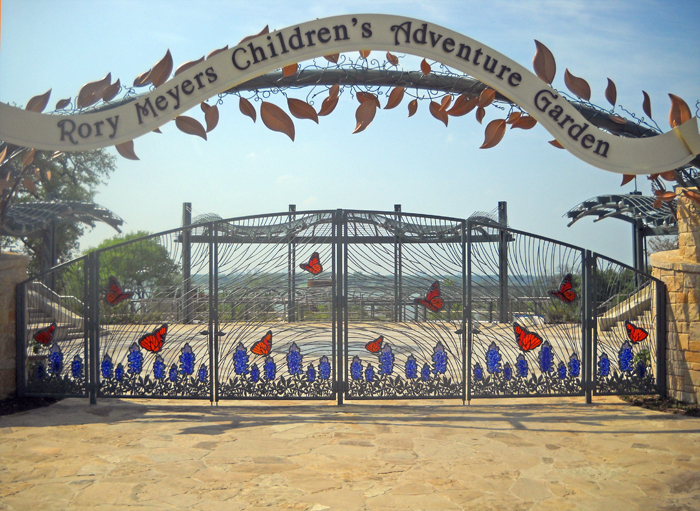
|
| Thank you
to Dallas Arboretum and Botanical
Garden; MKW + Associates, landscape
architects; Wheaton Arts and Cultural Center:
Glassworks Unlimited; and HC
Beck, general contractor, |
Thank you also to my family: spouse Mary Morse,
and daughters Susannah and Heidi for putting up with me
during the fabrication process, and Susannah for helping me
install. Thank you to Kate Graves for assistance in
all aspects of the fabrication. Thank you to Hank
Murta Adams for much assistance with using the kilns at
Wheaton Arts, and to Bullseye Glass for technical
assistance.
|
Home
|
|
|
|
|
|
|
|



















